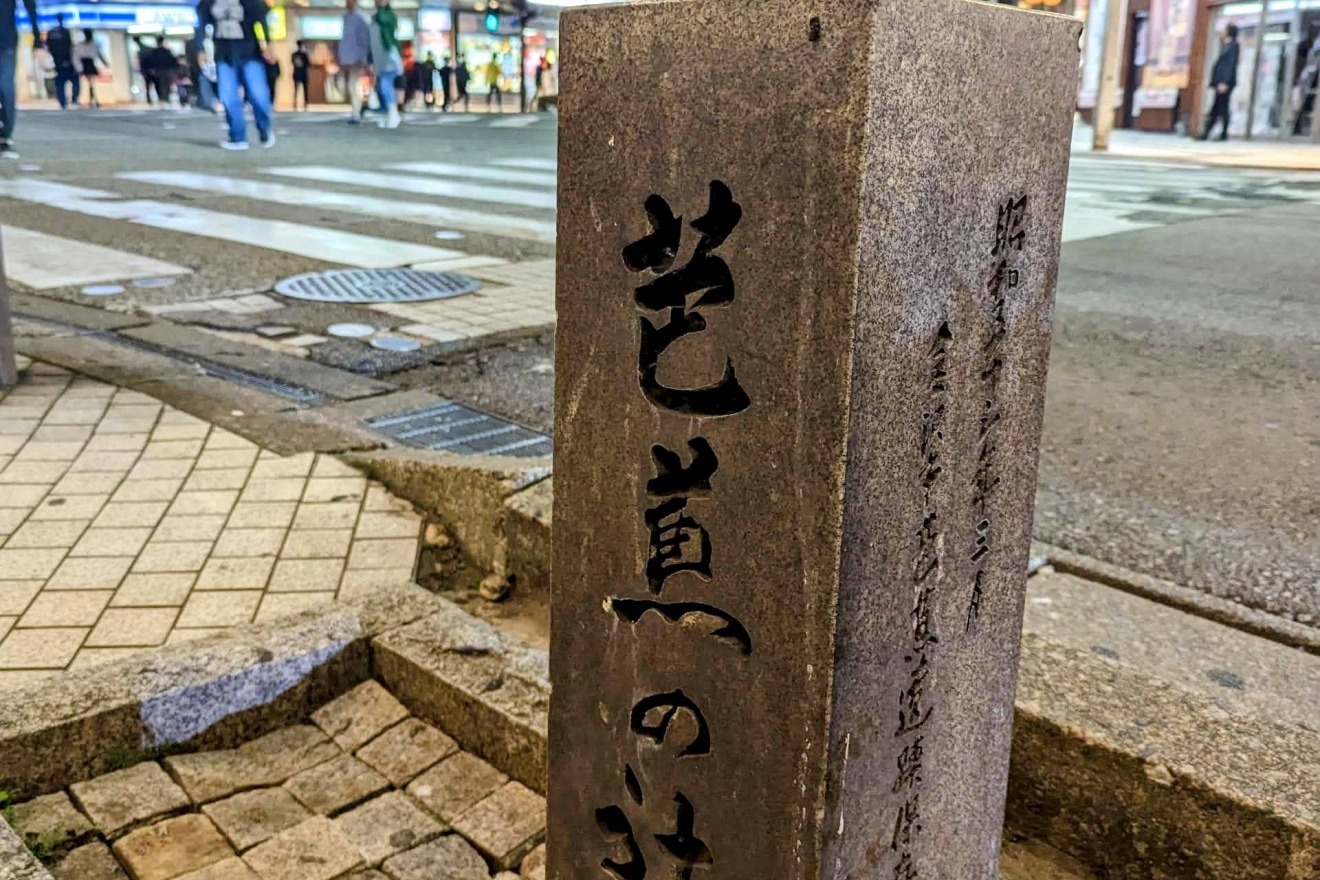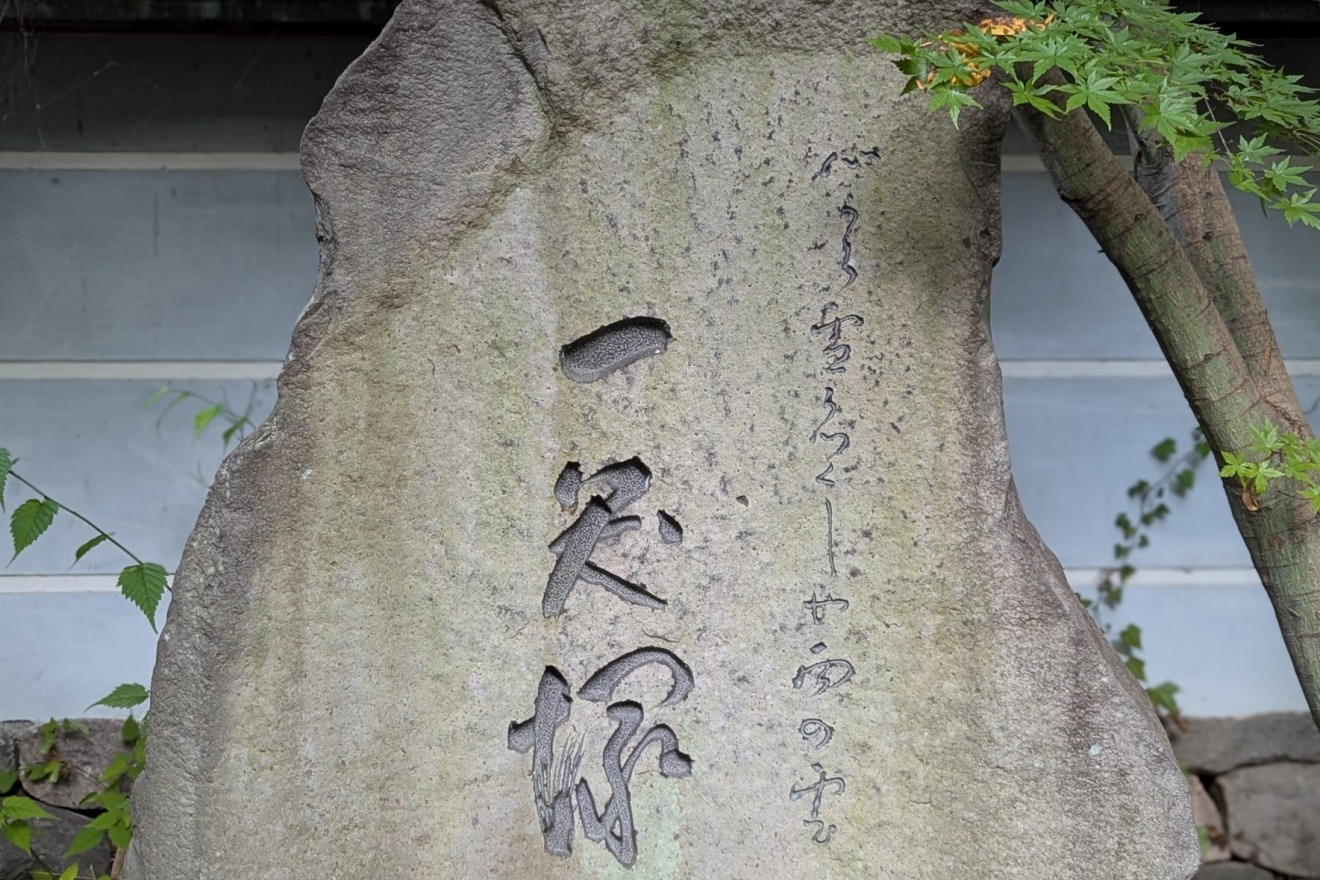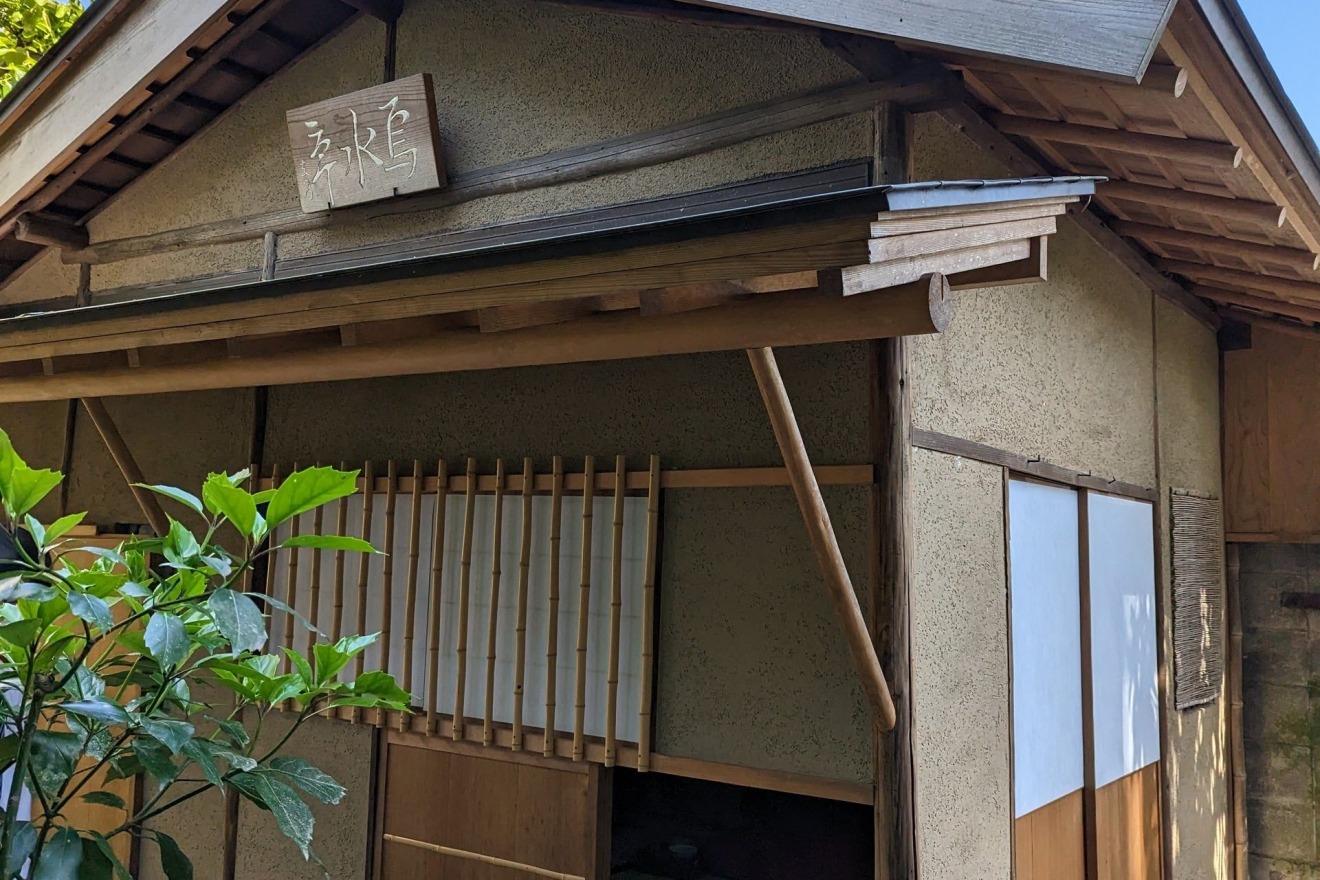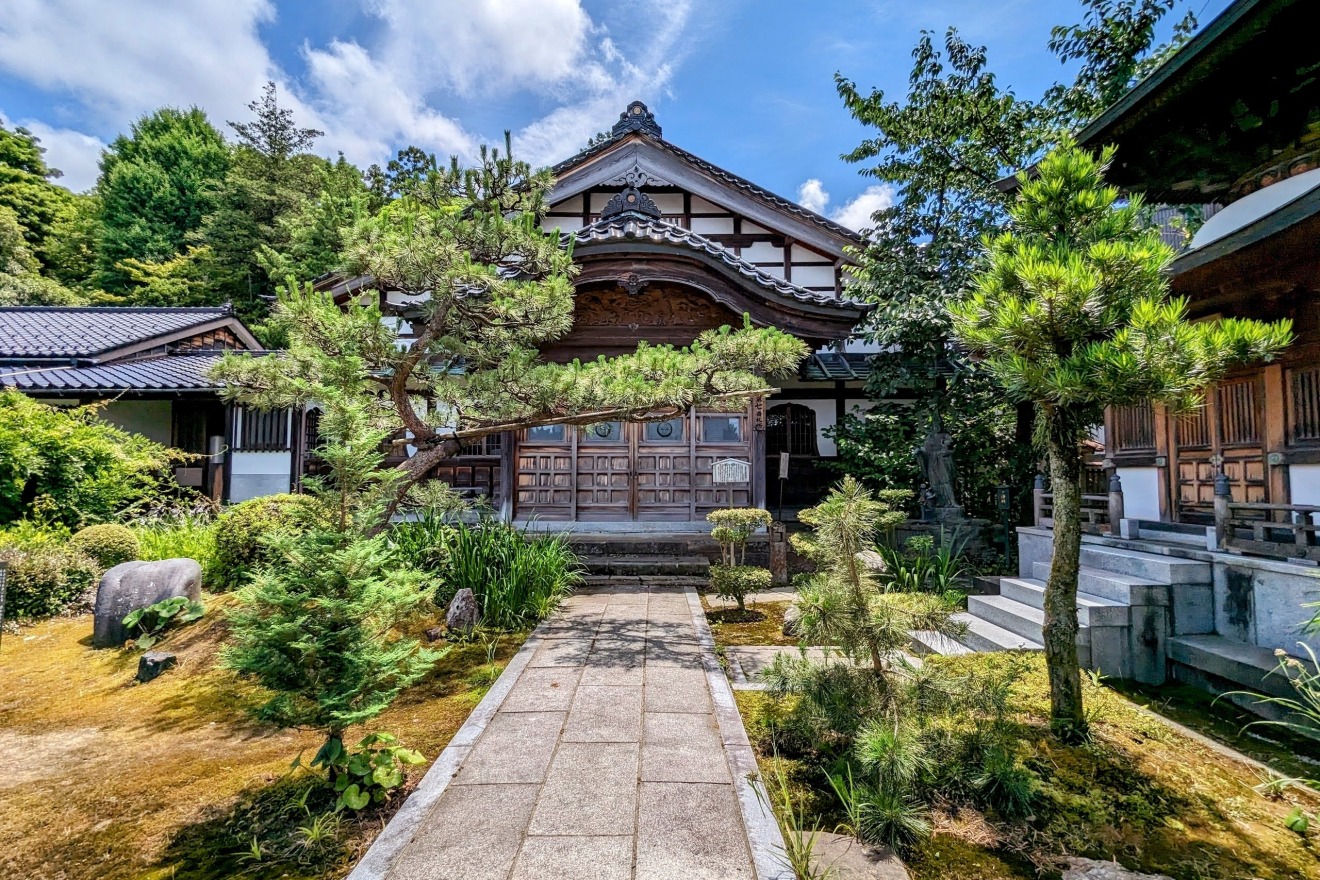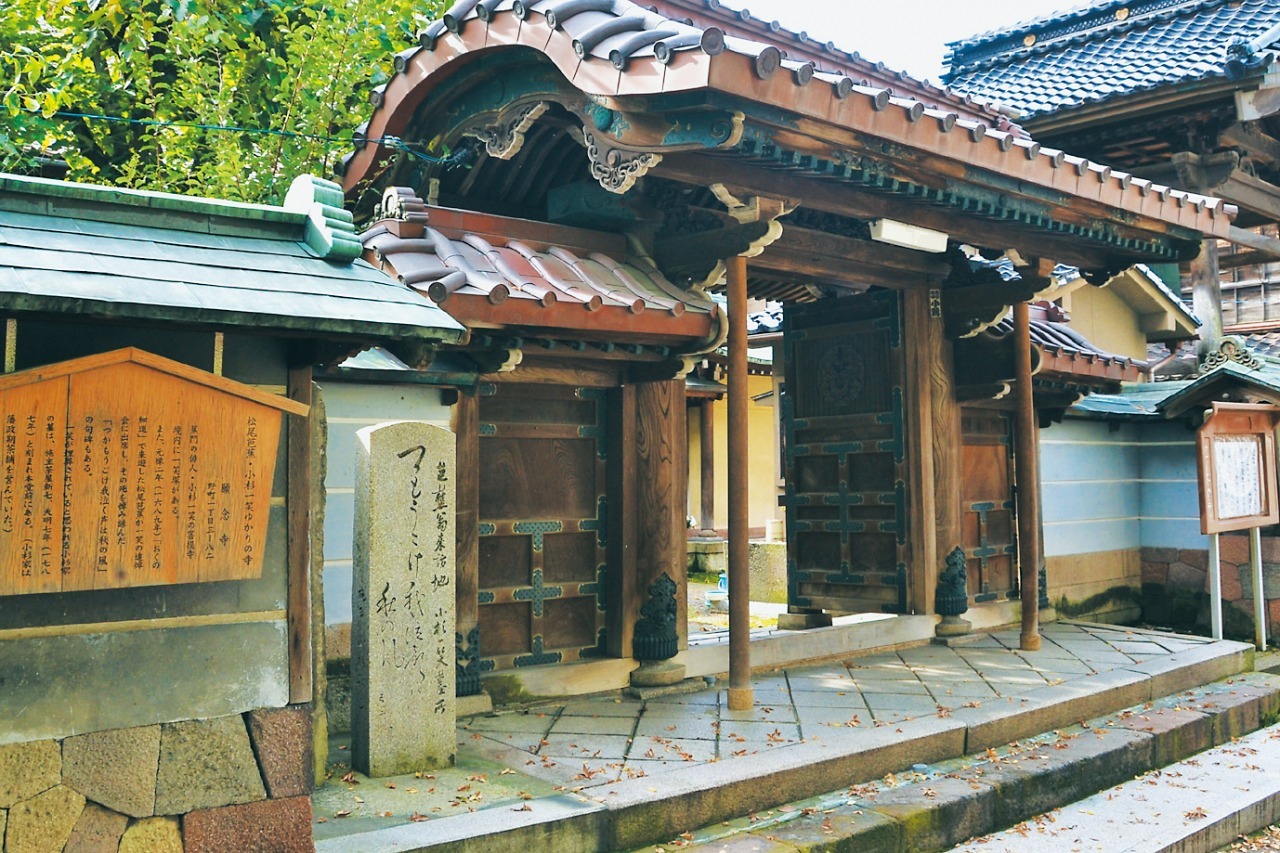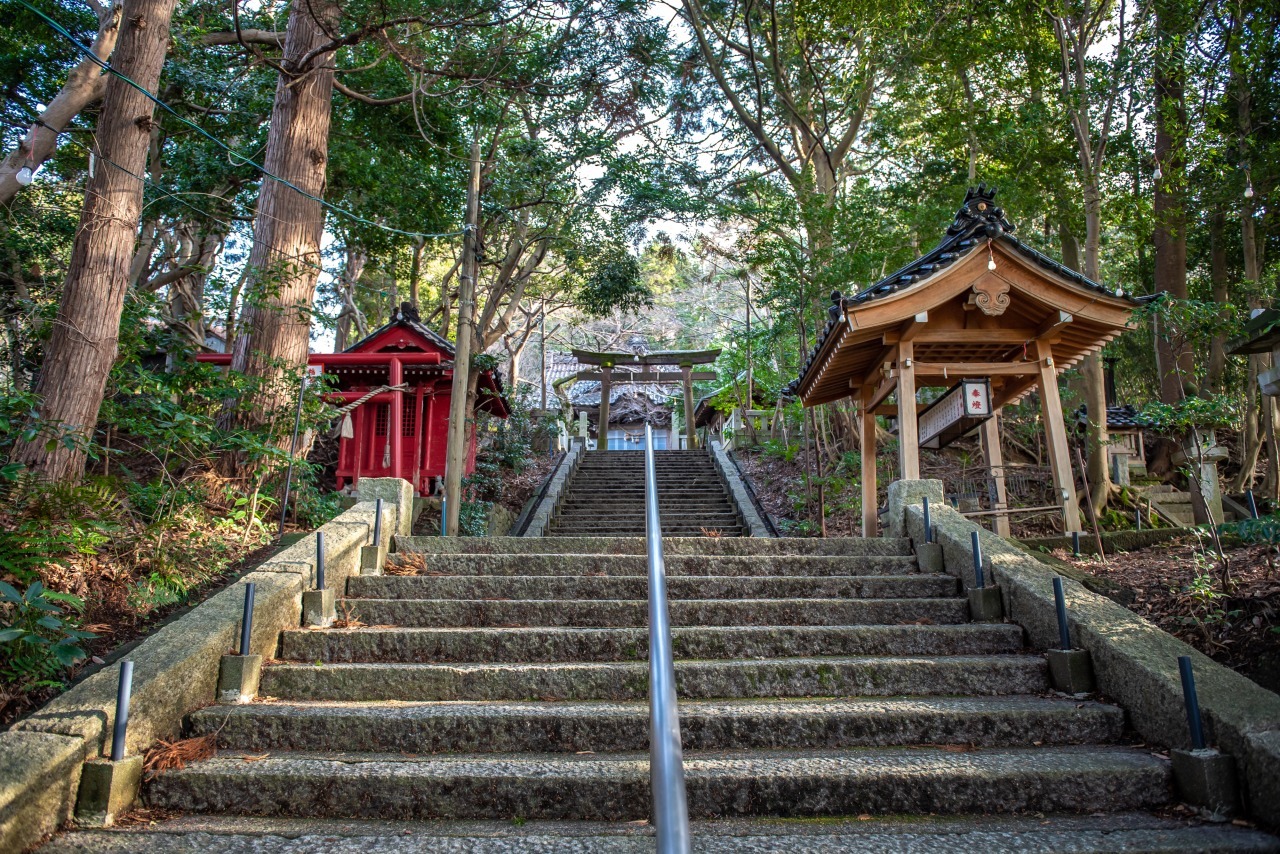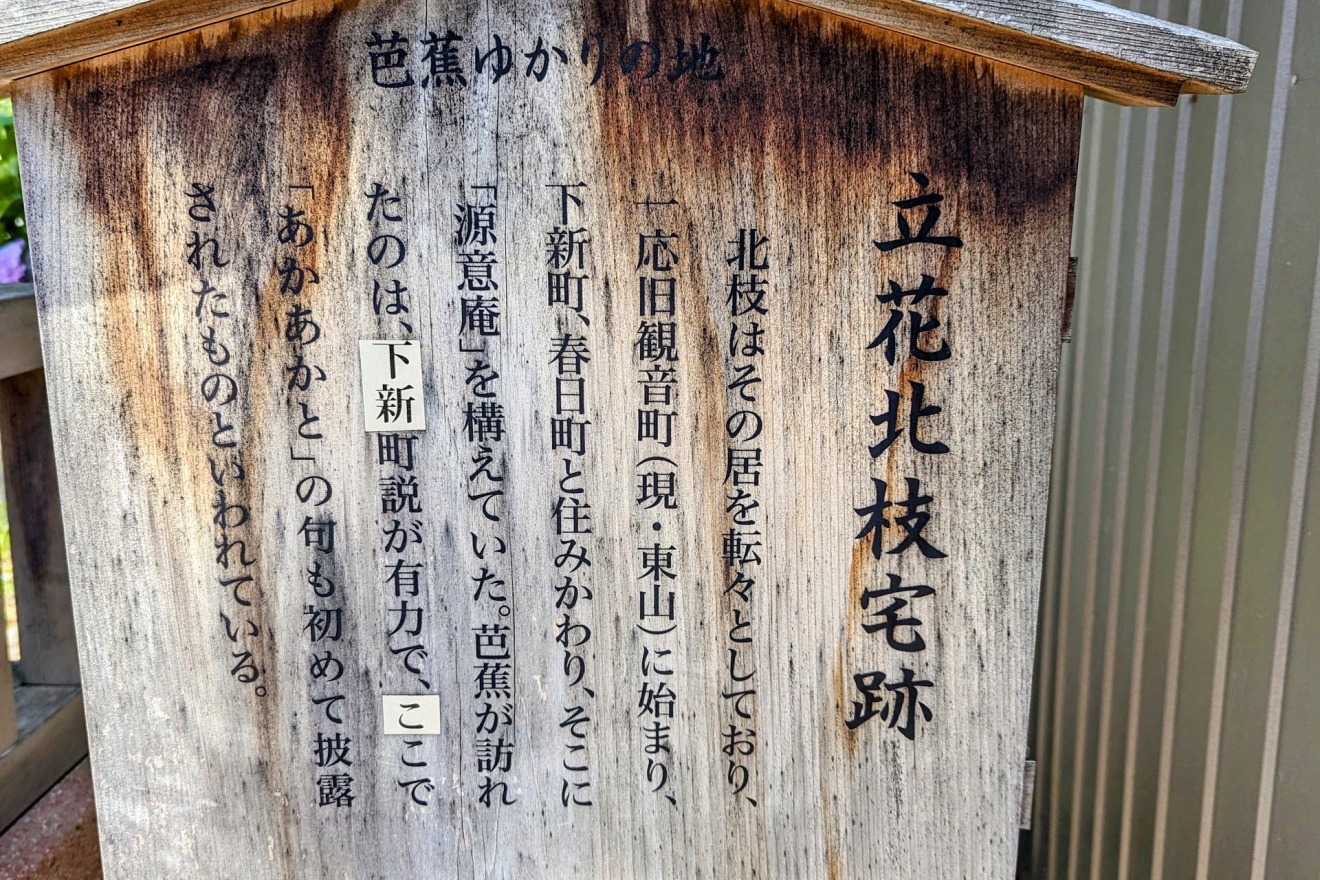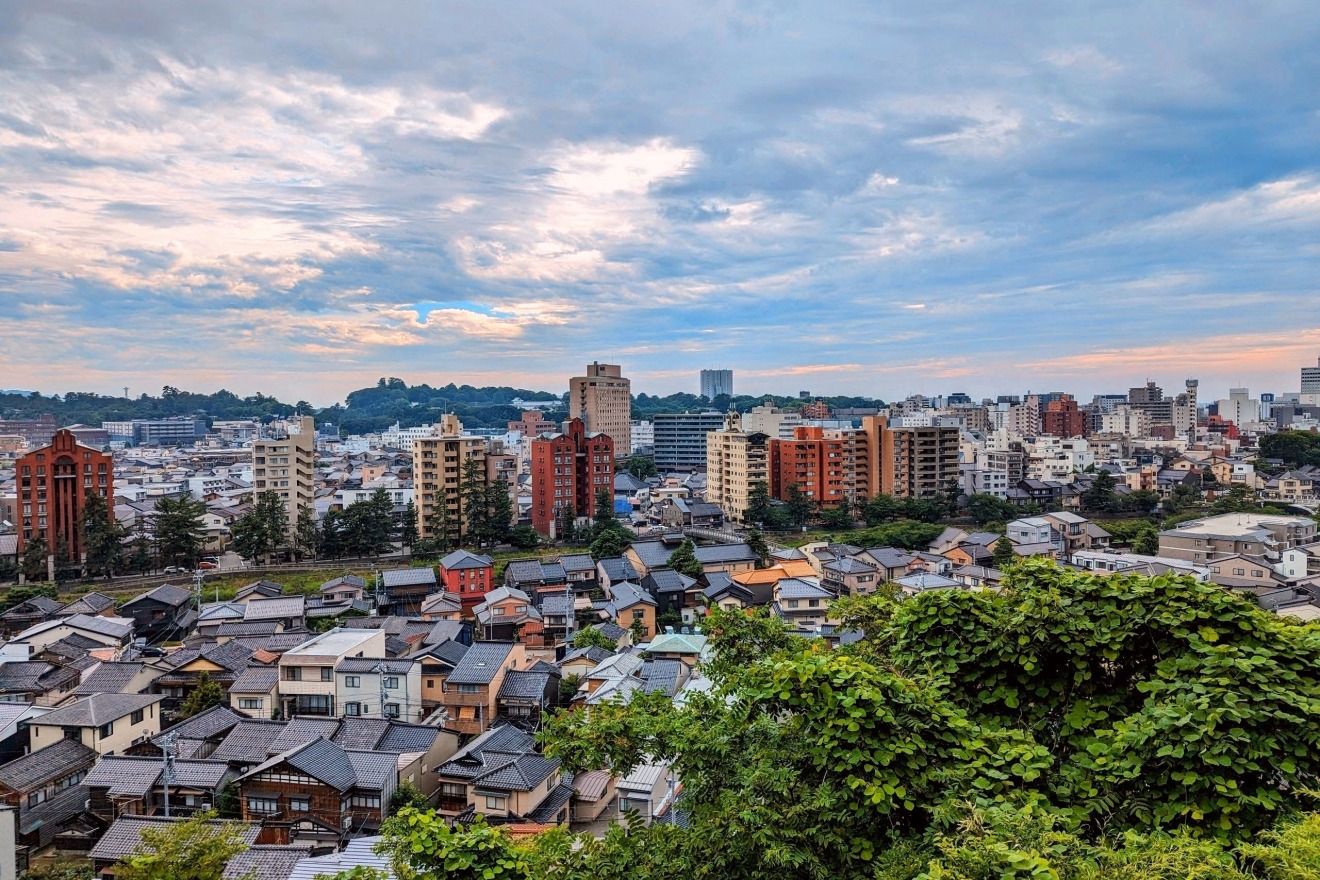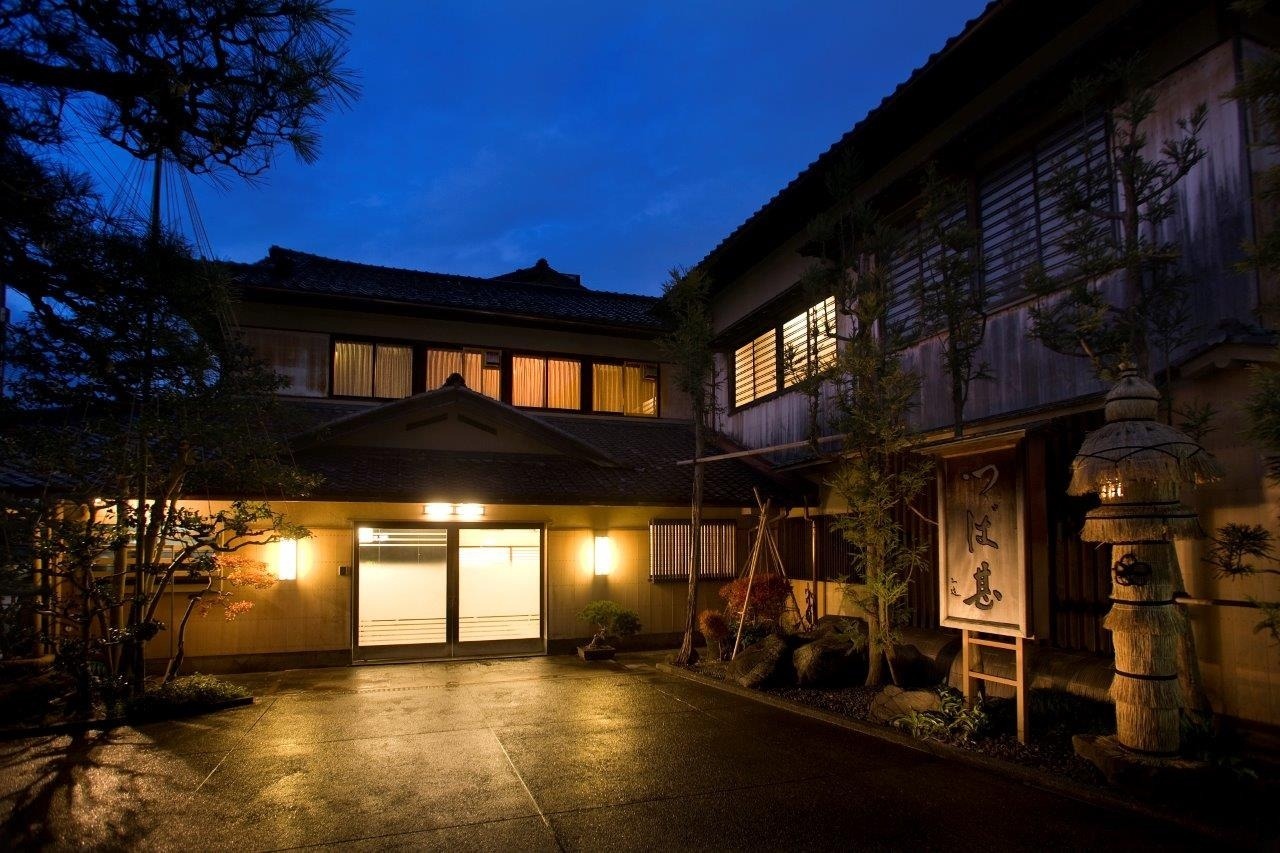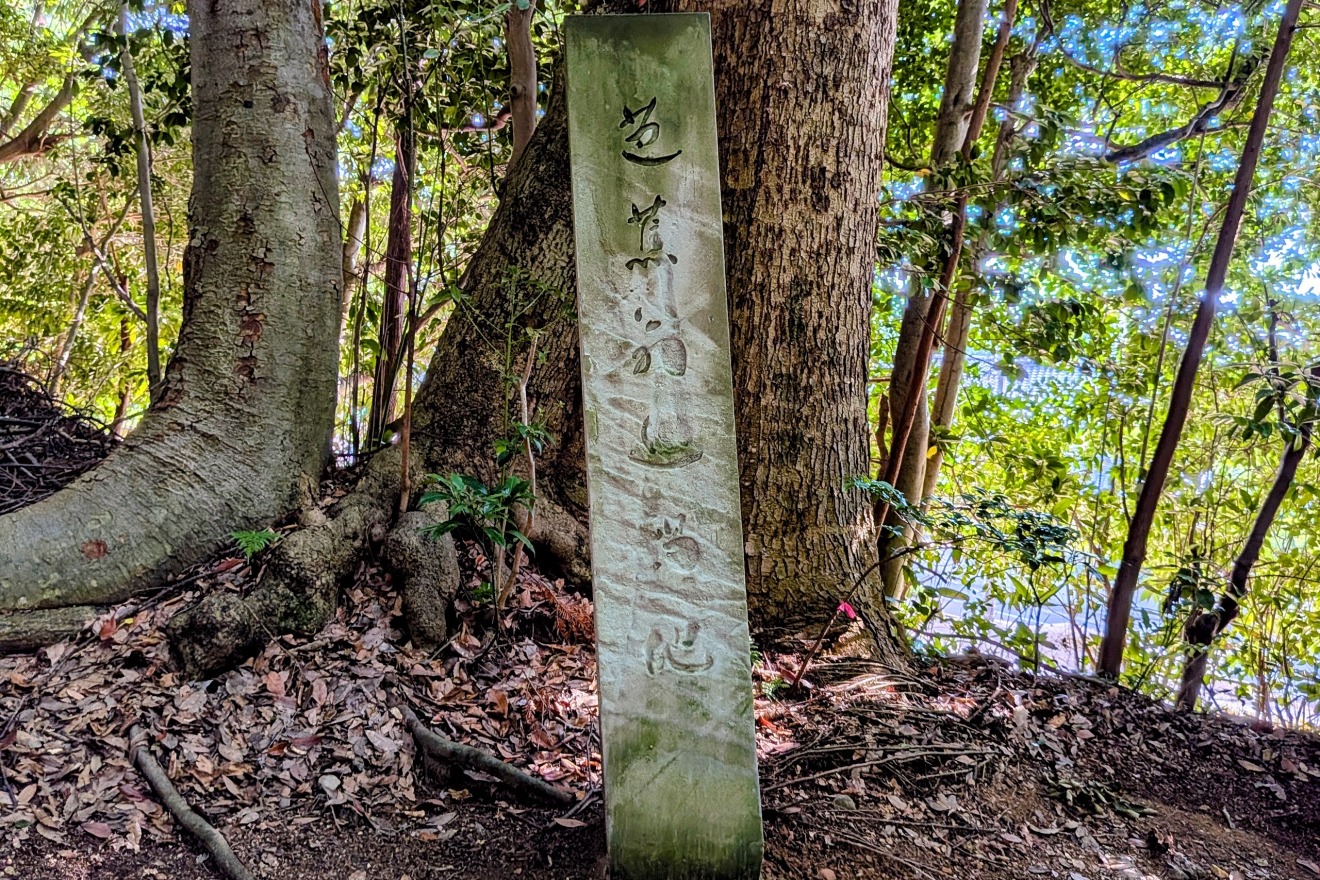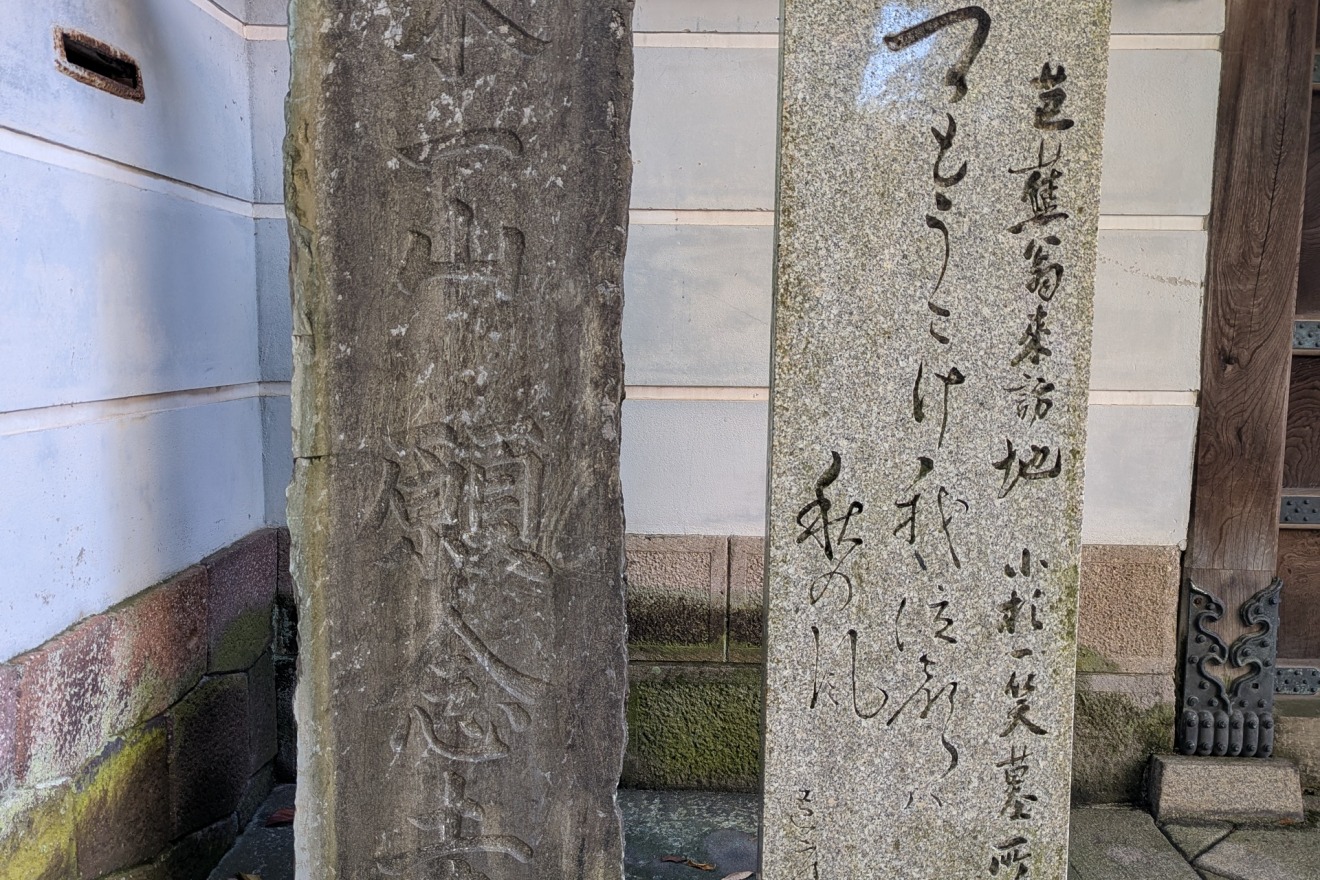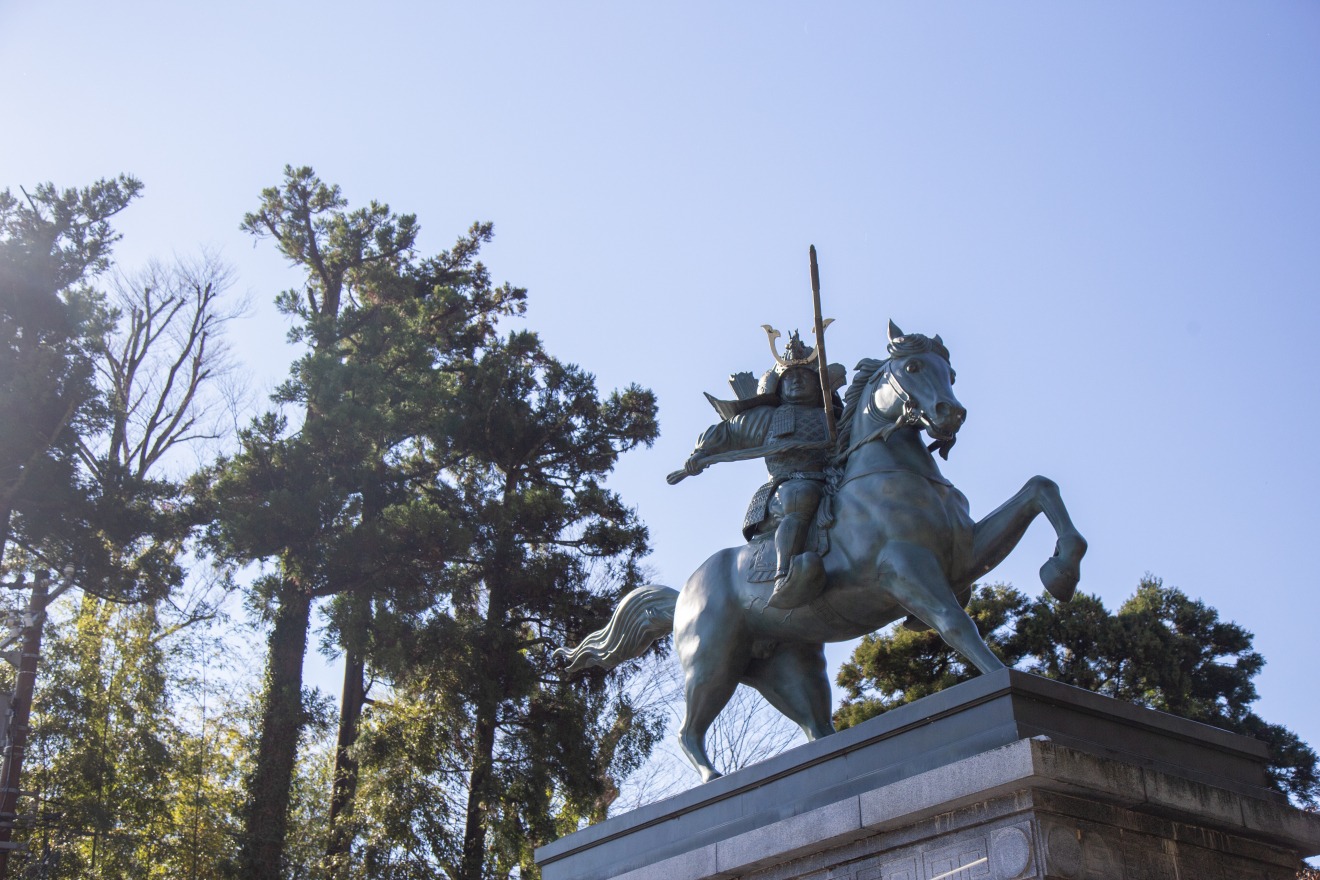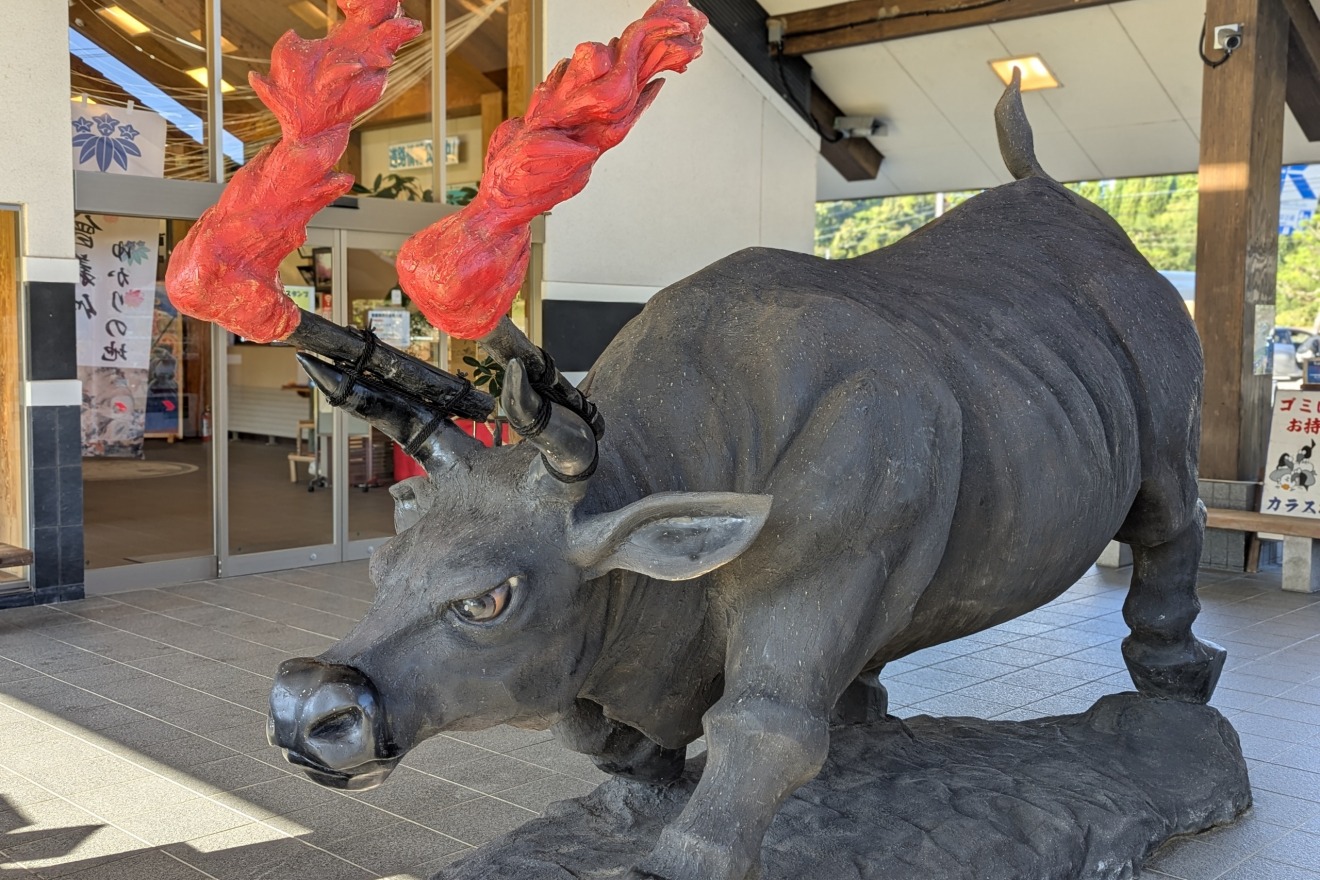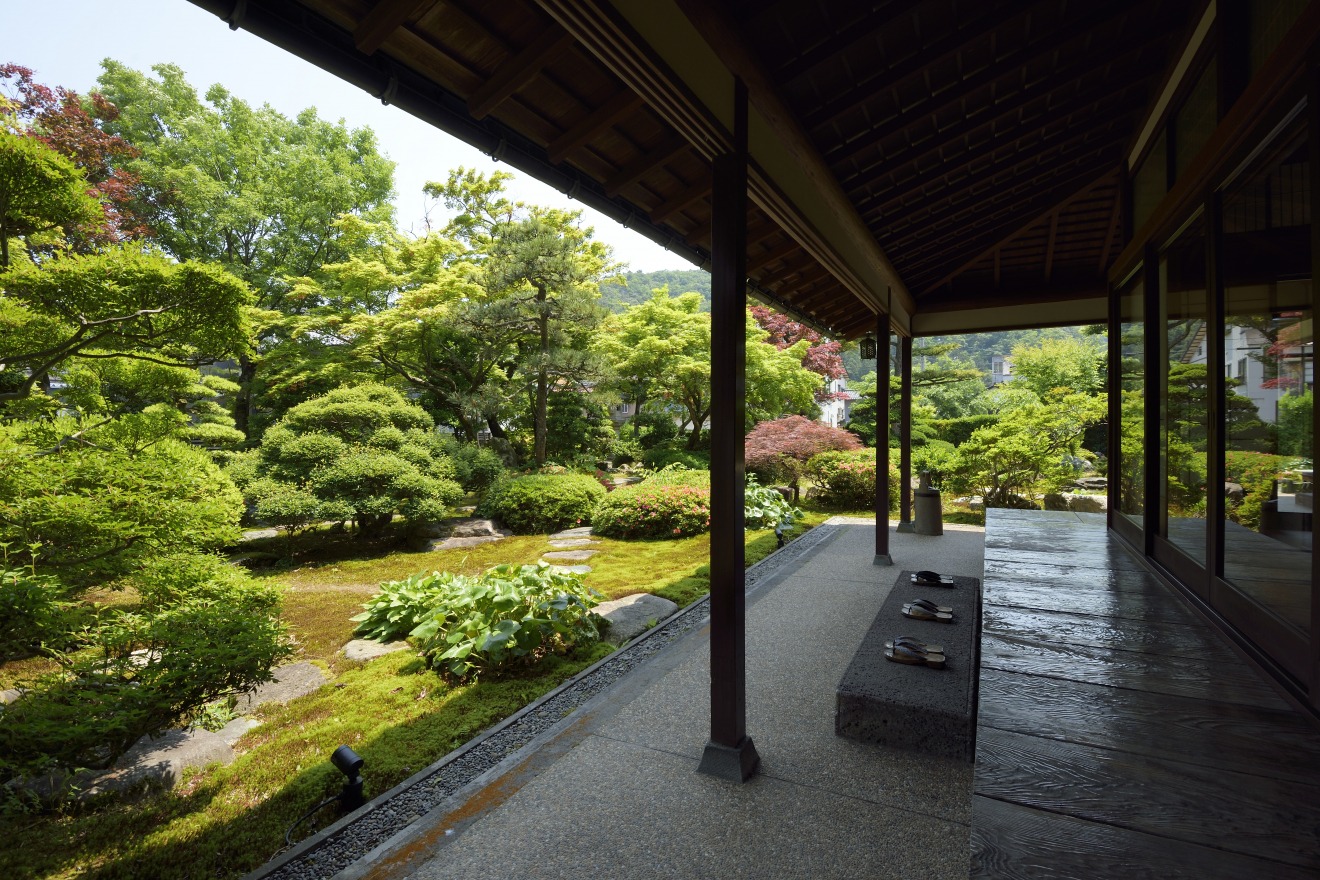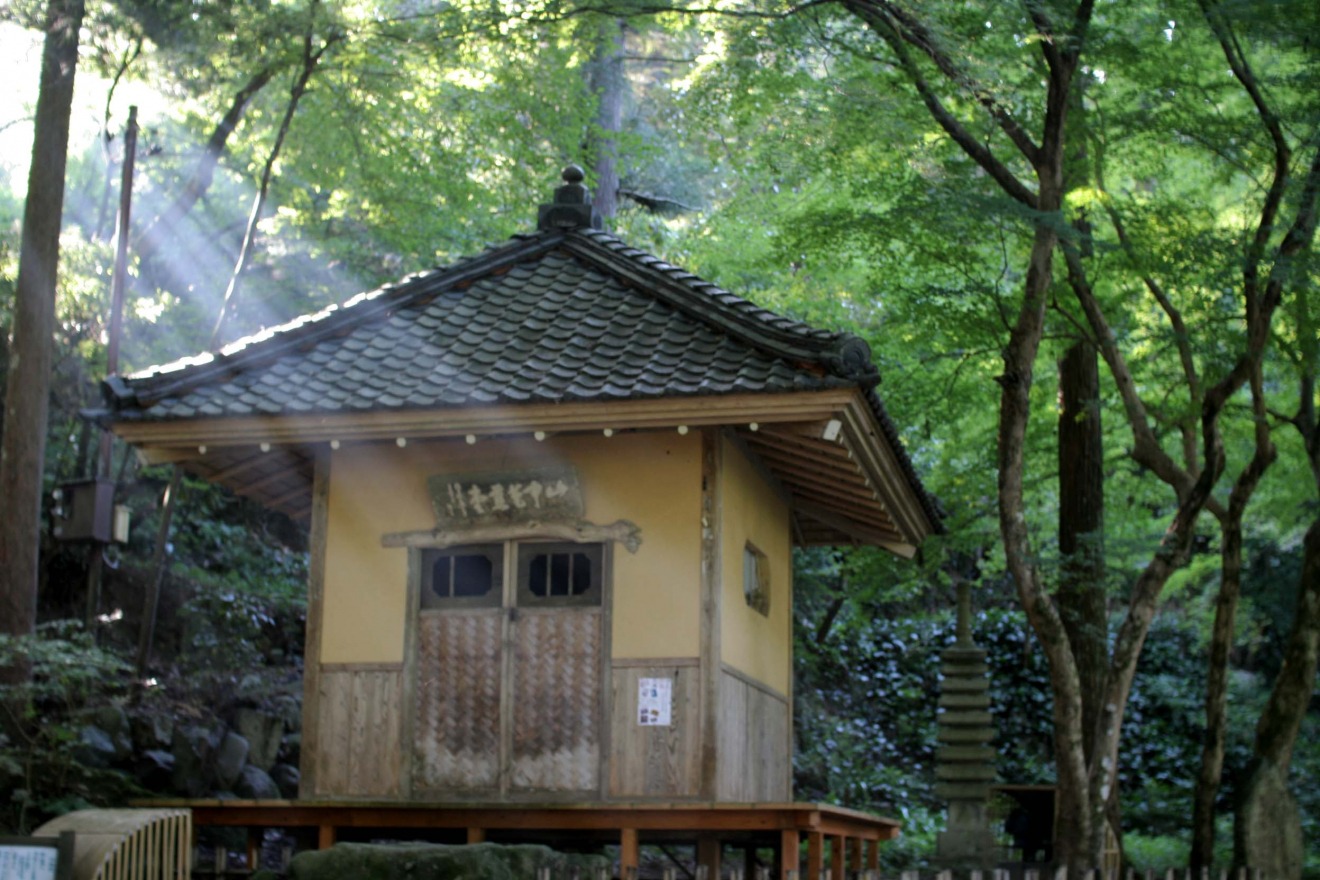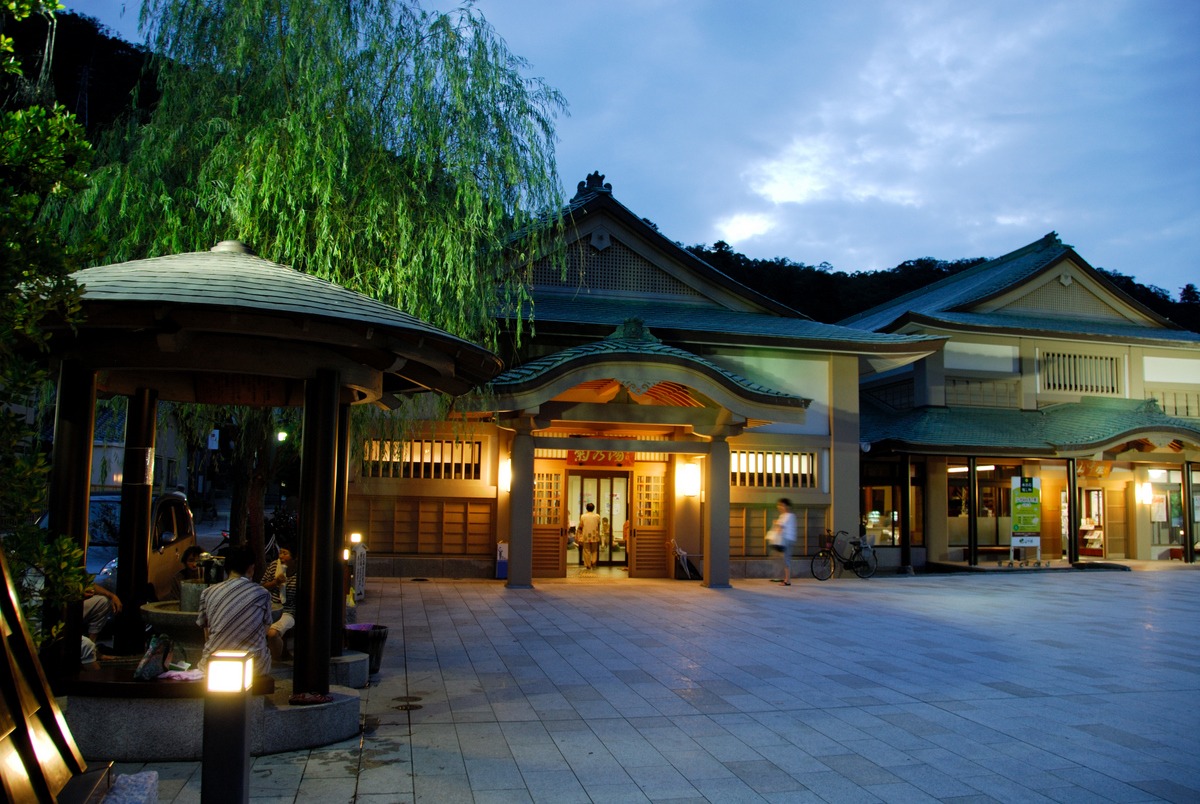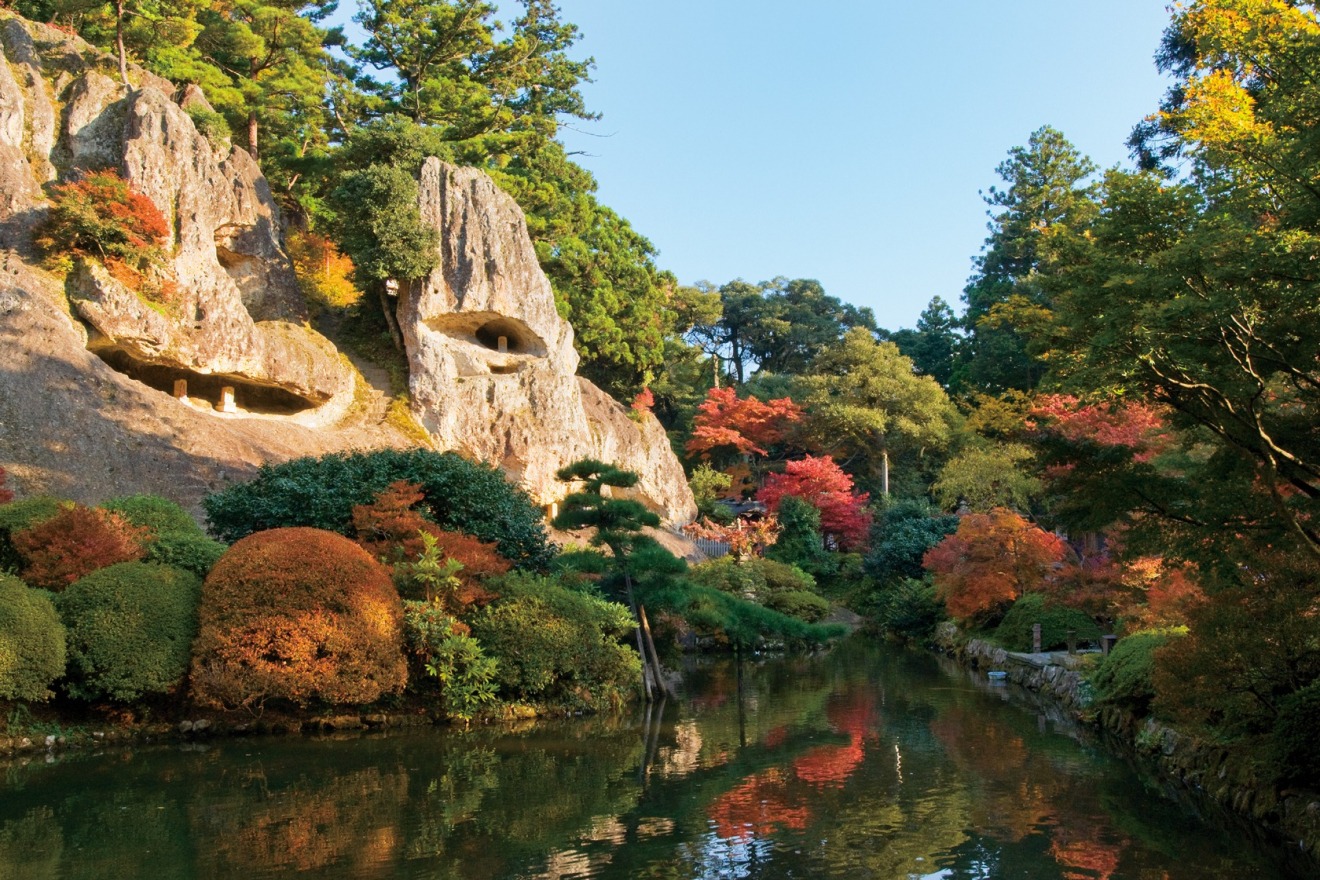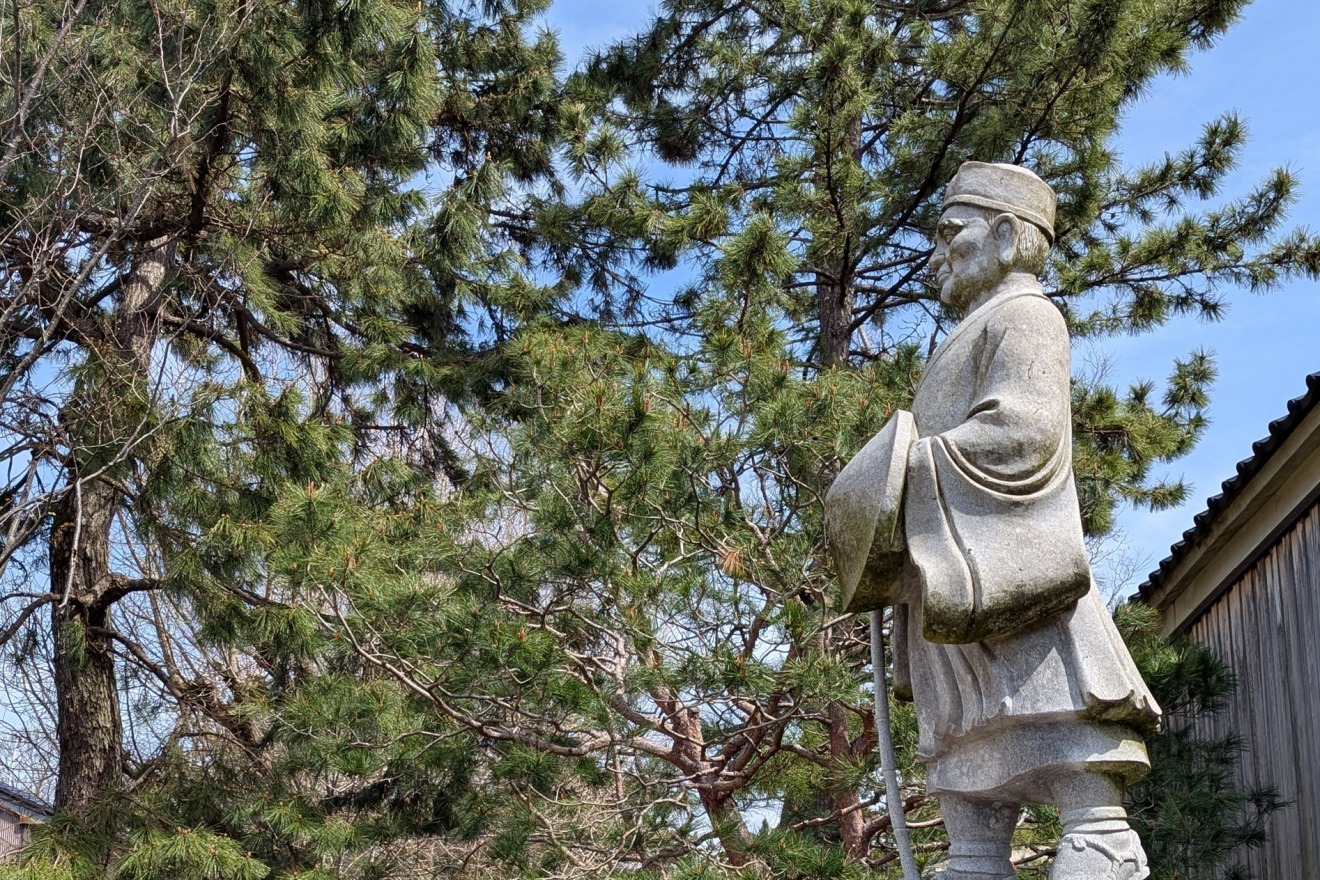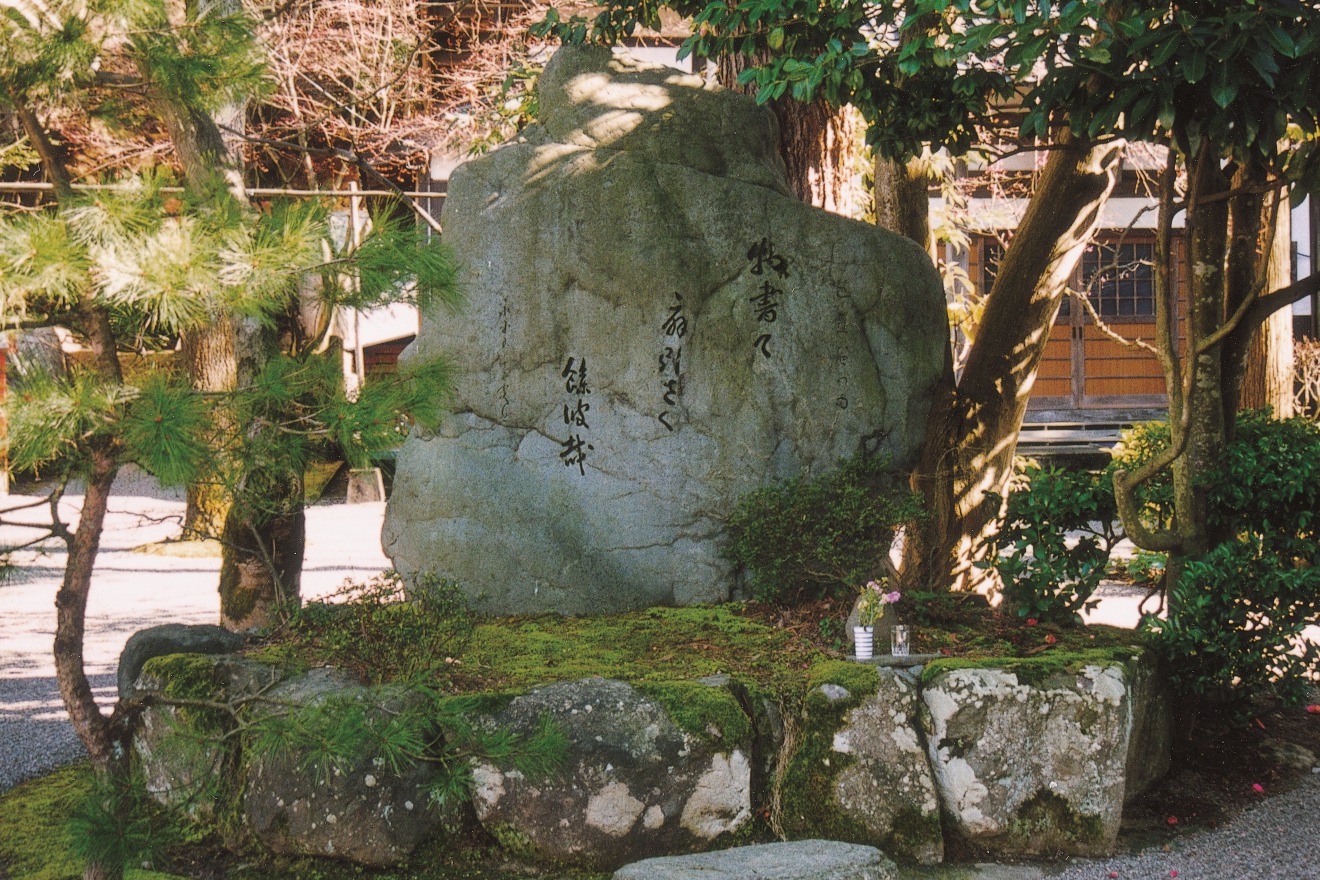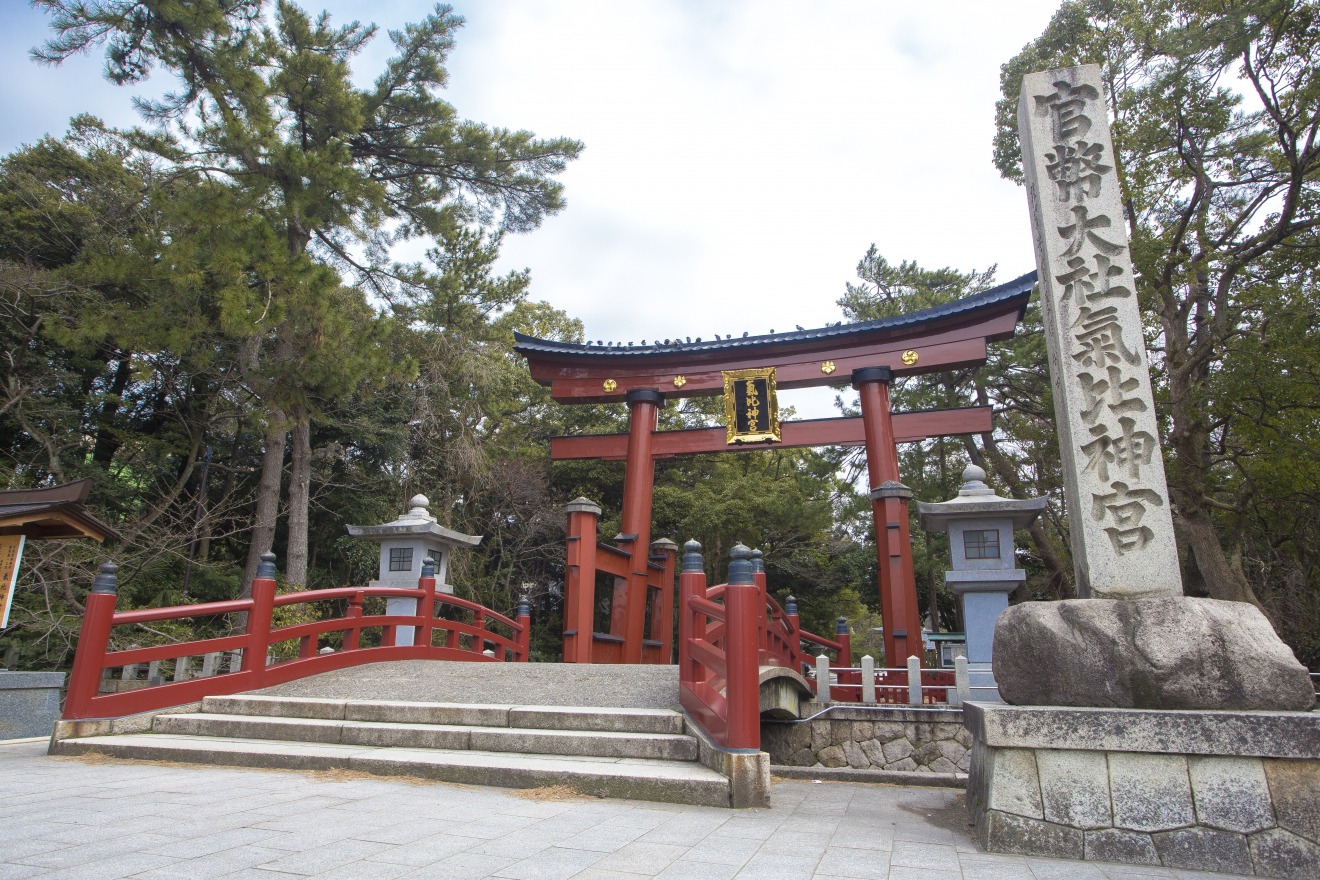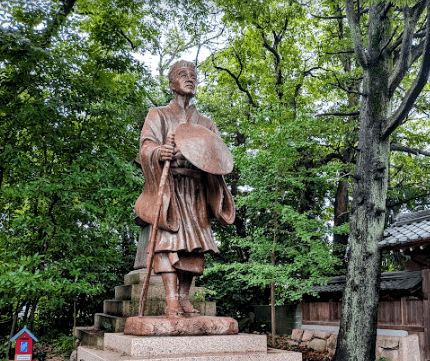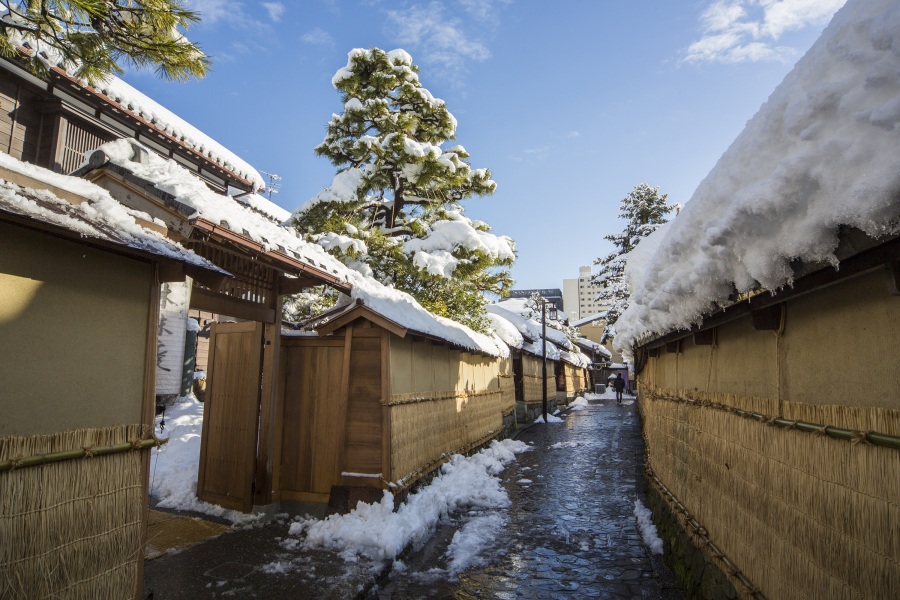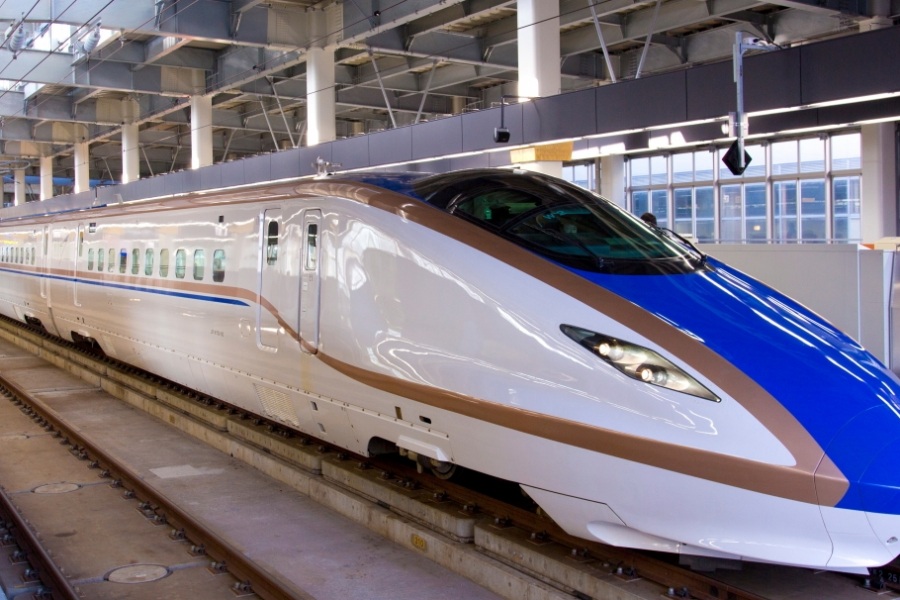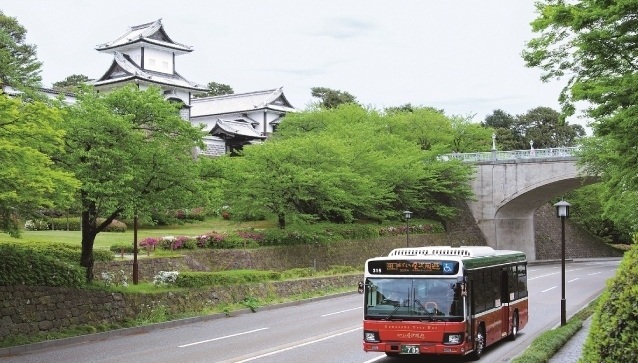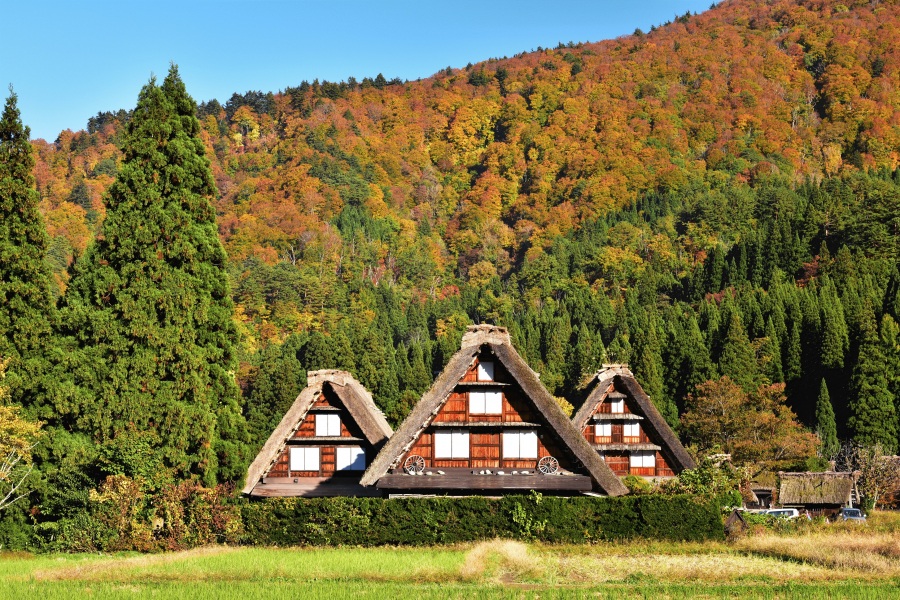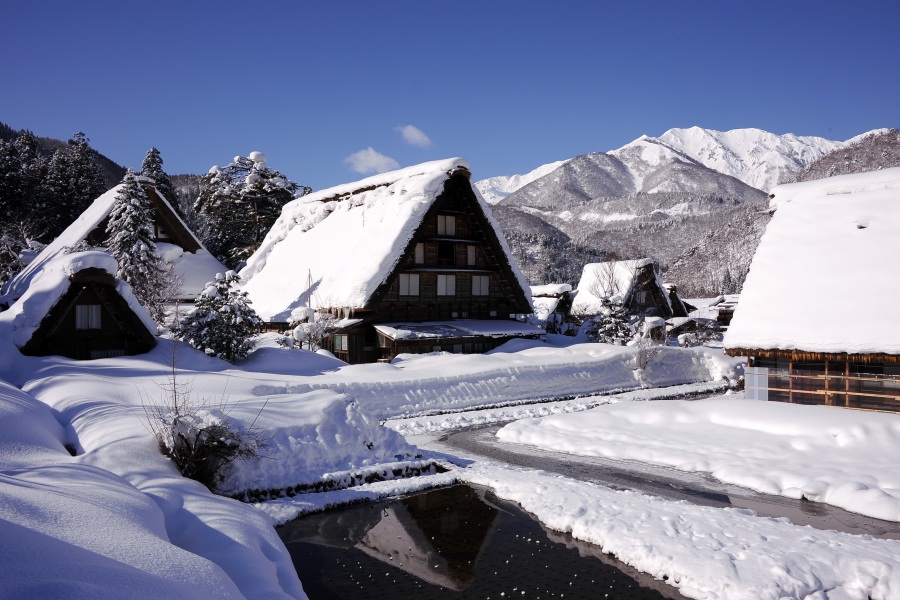MATSUO Basho and Kanazawa : A Timeless Journey along the Path of Oku no Hosomichi(The Narrow Road to the Deep North)
MATSUO Basho is a towering figure in Japanese literature, known as one of the greatest poets of haiku. On March 27, 1689 (around May 16 by the Gregorian calendar), Basho set out from Edo (present-day Tokyo) to embark on his famous journey, “Oku no Hosomichi.” Along the way, he visited various historical sites and poetic landmarks, reflecting on figures like the poet Saigyo and the priest Nōin, and immersing himself in the beauty of nature. As his journey neared its end, Basho spent 10 days in Kanazawa, where he found rest and engaged in poetic exchanges with local haiku poets. This ten-day stay was the longest during his entire journey.
At that time, Kanazawa was a cultural hub of the Hokuriku region, known for its flourishing haiku scene. Basho formed deep connections with the city’s poets, taking solace in the peaceful atmosphere. By visiting Kanazawa today, you can experience a "timeless journey" that conveys the landscapes and ambiance that inspired Basho.
Basho’s Footsteps in Kanazawa
The following day, he gathered with poets again at the valley stream in Utatsu Mountain, where they held a haiku session while floating boats (near Hōsenji Temple and Kosaka Shrine).
Basho’s time in Kanazawa also included on July 22 On July 23, he . Basho departed Kanazawa on July 24.
In 1689
July 15 (August 29 of the new calendar) : Basho left Takaoka in Toyama Prefecture on the morning of July 15, visiting the Hanyu Hachiman Shrine and reflecting on the historical battlefield of Kurikara Pass, where he thought about the warrior KISO Yoshinaka. Later that afternoon, he arrived in Kanazawa and stayed at the home of a local merchant, Kyo-ya Kichibei. During his stay, he learned of the death of a fellow poet from Kanazawa, Isshō.
July 16: Moved to Miyatake-ya Iemon's house and held a haiku gathering at “Koharu-an”.
July 17: Held a haiku gathering at “Gen'i-an” (in front of the present Izumi Kyoka Memorial Hall) at the home of TACHIBANA Hokushi.
July 18: Gathering with haiku poets
July 19: Gathering with haiku poets
July 20: Participated in a haiku gathering at “Shogen-an” at SAITO Issen's house along the Saikawa River, and took a stroll through Noda Mountain.
July 21: Float a boat and hold a haiku gathering in the valley of Utatsuyama (Hosenji Temple and Osaka Jinja Shrine)
July 22: Participated in a memorial haiku meeting at Gan-nenji Temple, in tribute to the late Isshō.
July 23: Took a trip to the outskirts of Kanazawa to visit Kanaiwa, where he visited Honryuji Temple.
July 24: Depart from Kanazawa
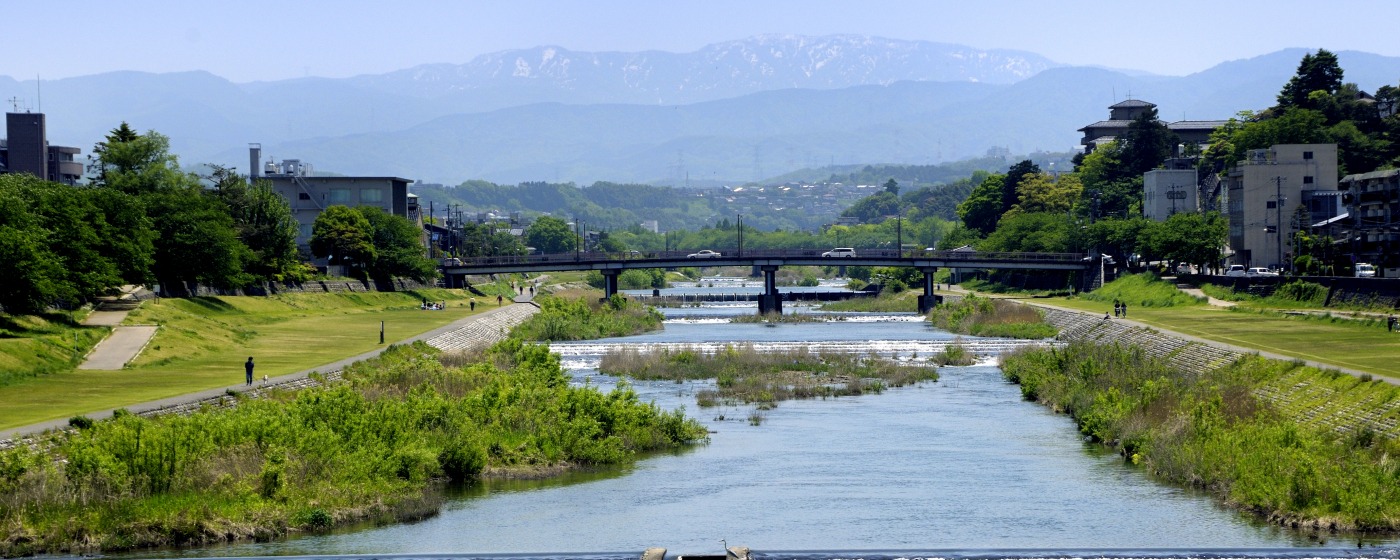
The Footsteps of Basho Left in Kanazawa
Kanazawa is home to several places deeply connected to Matsuo Basho, where you can walk in his footsteps and feel the atmosphere of the spots that inspired his haiku. By visiting these locations, you can imagine the places Basho visited and understand the emotions he must have felt as he composed his poems.
1. Stone monument "Basho no Tsuji" (Site of Miyatake-ya Iemon's House)
This stone monument stands where Basho stayed at the Miyatake-ya, one of the inns during his stay in Kanazawa. During his 9 nights in the city, Basho spent 8 nights at two branches of Miyatake-ya. The main branch (a medicine shop) stood near the location of the monument, and the branch (a traveler’s inn) was just nearby. Today, the area is a busy intersection, but it's an intriguing thought to imagine the surroundings as they were over 330 years ago.
Location: 2-2-15 Katamachi
Nearby attractions: Nagamachi Samurai District, Maeda Tosanokami-ke Shiryokan Museum, 21st Century Museum of Contemporary Art.
2. Gan'nen-ji Temple and Isshō's Memorial Mound
Gan'nen-ji is the temple where Basho attended a memorial haiku meeting for the poet Isshō, who had passed away the previous year. The "Isshō Mound" is located within the temple grounds. Basho's haiku here, "My sorrow becomes the autumn wind, moving even the mound." is part of the legacy of his visit.
Location: 1-3-82 Nomachi
Nearby attractions: Myōryū-ji Temple(Ninja Temple), Honchō-ji Temple(Haiku Monument), Jogaku-ji Temple(Haiku Monument), Nishi Chaya District, Temple Town Traditional Architecture Preservation Area, Yoshirō and Yoshio Taniguchi Museum of Architecture, KANAZAWA
Note: "Nishi no Kumo" (Isshō's brother's work) is available online at the Ishikawa Prefectural Library.
3. Shogen-an
At SAITO Issen's hermitage, Basho is said to have held a haiku meeting. It was here that the haiku "The sun sets red, yet the autumn wind whispers faintly, bringing some relief." was composed. The location is just above the Hamaguri-zaka slope , across the Saigawa River.
Location: Near 5-1-33 Teramachi
Nearby attractions: Myōryū-ji (Ninja Temple), Temple Town Traditional Architecture Preservation Area, Yoshirō and Yoshio Taniguchi Museum of Architecture, KANAZAWA, Honchō-ji temple (Haiku Monument), Jogaku-ji temple(Haiku Monument).
Note: No monument or informational guide is present.
4. Koharu-an (Ryotei "Tsubajin")
The tea room where Basho was entertained by Miyatake-ya has been moved to the traditional Japanese restaurant "Tsubajin" and is now called "Koharu-an."
Location: 5-1-8 Teramachi
Nearby attractions: Myōryū-ji (Ninja Temple), Nishichaya District, Temple Town Traditional Architecture Preservation Area, Yoshirō and Yoshio Taniguchi Museum of Architecture, KANAZAWA.
Note: Tsubajin, established in 1752, is a well-known traditional restaurant that has welcomed many intellectuals and cultural figures.
5. Hōsen-ji Temple
Established in 1612 as the prayer temple for the MAEDA family, Hōsen-ji is located up the steep "Korai-zaka" slope next to Utasu Jinja Shrine. It is said that Basho visited this temple, which offers a beautiful view of the Higashi Chaya District and the Asano River area. Literary scholar Donald Keene praised the sunset view from here as "the most beautiful scene of sunset in Kanazawa."
Location: 57 Korai-machi
Nearby attractions: Higashi Chaya District, Utasu Jinja Shrine, Utsutsu-yama Traditional Architecture Preservation Area, Yasue Gold Leaf Museum.
6. Honryū-ji Temple
Famous for housing the grave of the wealthy merchant ZENIYA Gohei, Honryū-ji holds a haiku monument that Basho made during his visit to Kanaiwa (former Miyano-koshi). The haiku reads, "A small sea bream is skewered; the coolness of the willow"—a depiction of a fisherman's wife skewering a small fish on a willow branch, evoking a sense of coolness.
Location: 3-2-23 Kanaiwa West
Nearby attractions: ZENIYA Gohei Memorial Hall, Ōno District, Yamato Koji Park, Ikiiki Fish Market.
7. Monument of “Basho's pilgrimage site" (Inside Osaka Shrine)
On the seventh day of his stay in Kanazawa, Basho is said to have enjoyed boat play in a valley near this shrine. Founded in 720 as a branch of Kasuga Taisha Shrine in Nara, the shrine was renamed Osaka Shrine in 1874.
Location: 42-1 Yama-no-ue-machi
Nearby attractions: Shinren-sha (TACHIBANA Hokushi’s Grave), Gekshin-ji (Grave of Sennsō Sōshitsu, the founder of the Urasenke Tea School), Higashi Chaya District, Yasue Gold Leaf Museum.
8. TACHIBANA Hokushi’s Former Residence
TACHIBANA Hokushi, one of the "Ten Great Disciples of Basho," moved around Kanazawa, and it was here that his famous haiku, "Bright red, the sun ..." was first recited. After Kanazawa, Hokushi traveled along with Basho for about 25 days to Fukui.
Location: 6-21 Shimoshin-machi (near Kuboichi )
Nearby attractions: Kazue-machi Chaya District, Omicho Market, Izumi Kyōka Memorial Museum, Phonograph Museum, Ōhi Porcelin Gallery, Samurai residence Kurando Terashima's House.
Note: "Nishi no Kumo" (Hokushi's anthology) can be viewed online at the Ishikawa Prefectural Library.
9. Shinren-sha Temple
TACHIBANA Hokushi’s grave and monument are located.
Location: 4-11 Yama-no-ue-machi
Nearby attractions: Gesshin-ji (Grave of Sennsō Sōshitsu, the founder of the Urasenke Tea School), Higashi Chaya District, Yasue Gold Leaf Museum.
10. Yōchi-in Temple
This rare temple, which has remained in its original location, was also a place where poet KAGAMI Shikō (one of 10 Basho’s Great Disciples) stayed. The temple grounds feature haiku monuments dedicated to four poets associated with the temple.
Location: 6-21 Shimoshin-machi
Nearby attractions: Nagamachi Samurai District, Maeda Tosanokami-ke Shiryokan Museum, Nishi Chaya District, Old Merchant's House Museum.
Haiku Recited in Kanazawa by Matsuo Basho
During his stay in Kanazawa, Basho wrote many haikus and experimented with new ideas in the art of haiku. Arriving in the city around the end of August or early September on the modern calendar, he was greeted by the onset of autumn. Despite the lingering summer heat, he would occasionally feel the autumn breeze, inspiring him to incorporate seasonal words related to autumn, such as "autumn wind" and "autumn coolness," into his haiku.
"塚も動け 我が泣く声は 秋の風"
(Tsuka mo ugoke / Waga naku koe wa / Aki no kaze)
"My sorrow becomes the autumn wind, moving even the mound."
This haiku was written after Basho learned of the death of the talented haiku poet, Kosugi Issho, whom he had been eagerly anticipating to meet in Kanazawa. Basho composed this poem during a memorial haiku meeting, expressing his grief directly. The verse conveys the depth of his emotions as he likens his sadness to an autumn wind, so strong it can move even a grave mound.
Monument Location: Gan'nen-ji Temple (Nomachi 1-3-82)
"秋涼し 手毎にむけや 瓜茄子"
(Aki suzushi / Tegoto ni muke ya / Uri nasu)
"The weather is cooling, let's each peel and eat the fresh melon and eggplant."
Basho wrote this haiku in response to a gathering at SAITO Issen’s Shogen-an, where he was welcomed with hospitality. The poem captures the coolness of the autumn air and the simple pleasure of preparing and eating fresh vegetables, such as melon and eggplant, symbolizing the seasonal change.
Monument Location: Chokyu-ji Temple (Teramachi 5-2-20)
"あかあかと 日はつれなくも 秋の風"
(Aka aka to / Hi wa tsurenaku mo / Aki no kaze)
"The sun sets red, yet the autumn wind whispers faintly, bringing some relief."
This haiku reflects Basho’s observation of the strong, lingering summer heat, even as the first hints of autumn make their presence felt in the wind. The vivid image of the red setting sun contrasts with the coolness of the autumn breeze that offers a subtle but welcome respite.
Monument Locations: Kanazawa's Kenrokuen (Yamazaki-yama entrance), Saigawa Riverbank (Saigawa Bridge, Katamachi side) ,Jogaku-ji Temple (Nomachi 1-1-18)
These haiku showcase Basho's deep connection with the landscapes of Kanazawa, its people, and the changing seasons. Each poem captures a moment of time, evoking emotions and creating lasting images of his journey in the city.
Kanazawa Beyond: Following the Footsteps of Basho Before and After His Stay in Kanazawa
Basho’s journey around Kanazawa was part of his famed travelogue Oku no Hosomichi (The Narrow Road to the Deep North), during which he visited many culturally and historically significant places. In this article, we’ll trace his footsteps in the regions of Etchu (Toyama), Kaga (Ishikawa), and Echizen (Fukui).
Toyama Prefecture
Kurikara Pass & Hanyu Gokoku Hachiman Shrine
Located on the border between Etchu (Toyama) and Kaga (Ishikawa), Kurikara Pass is famous for the legendary military strategy “The Fire Oxen” used by KISO Yoshinaka against the Heike army. In 1183, after praying for victory at Hanyu Hachiman Shrine, Yoshinaka set fire to the horns of 400-500 oxen and charged with his 40,000-strong army against the Heike camp. Basho, who deeply admired Yoshinaka, is believed to have visited the shrine to feel the historical significance of the place. Afterward, Basho traveled through the Hokuriku Highway, crossing Kurikara Pass into Kaga.
- Location: Hanyu Gokoku Hachiman Shrine – 2992 Hanyu, Oyabe City, Toyama (About 40 minutes by car from Kanazawa Station)
- Kurikara Pass Battlefield Site – Hanyu, Oyabe City, Toyama (About 40 minutes by car from Kanazawa Station)
- Note: The annual "Yaezakura Matsuri" (Double Cherry Blossom Festival) is held from late April to early May, with around 6,000 cherry trees in full bloom.
Ishikawa Prefecture(except Kanazawa)
Tada Jinja Shrine
Tada Shrine houses the helmet and pieces of the ceremonial clothing of SAITO Sanemori, a historical figure who was instrumental in protecting young KISO Yoshinaka. Later, during the Genpei War, Sanemori became an enemy to Yoshinaka’s forces. Still, Yoshinaka did not forget his debt of gratitude and offered prayers at Tada Jinja Shrine. This is a place steeped in history, with Sanemori’s helmet on display, available by reservation or during the "Kabuto(Helmet) Festival" in late July.
- Location: Kamihonori, Komatsu City, Ishikawa (About 45 minutes by car from Kanazawa Station)
- Note: The "Kabuto(Helmet) Festival" is held every late July.
Natadera Temple
Natadera Temple is famous for its white, exposed rocks and its stunning autumn leaves, which have earned it designation as a national scenic site. Basho, accompanied by his disciple Sora, visited Natadera on their way back to Komatsu, where he wrote the famous haiku: “The stones of Ishiyama, whiter than the autumn wind.”
- Location: Natadera, Komatsu City, Ishikawa (About 1 hour by car from Kanazawa Station)
- Note: The temple’s autumn foliage is best from early to late November.
Kensho-ji Temple
Kensho-ji Temple, once called Rissho-ji temple, is home to a statue of Basho carved by one of his disciples, TACHIBANA Hokushi.
- Location: 94 Teramachi, Komatsu City, Ishikawa (About 1 hour by car from Kanazawa Station)
Basho no yakata
Basho visited the famous hot spring town of Yamanaka Onsen with his disciple Sora and stayed for nine days at the Izumiya Inn. The Basho Museum, located in the former guest house next to the inn, displays original scrolls, haiku materials, and other Basho-related artifacts. Basho also famously wrote about the hot spring's healing properties, noting that it was second only to Arima Onsen in terms of therapeutic effects. The public bath "Kiku( chrysanthemums)-no-yu(hot spring)" is named after Basho’s poem: "Yamanaka ya, The chrysanthemums do not fall, The scent of the bath."
- Location: 2-86-1 Honmachi, Yamanaka Onsen, Kaga City, Ishikawa (About 1 hour 10 minutes by car from Kanazawa Station)
Kakusenkei Gorge & Basho Hall
Basho praised this picturesque location in his travel writings as the highlight of his journey. It was here that he parted ways with Sora, who had fallen ill.
- Location: Higashimachi, Yamanaka Onsen, Kaga City, Ishikawa (About 1 hour 10 minutes by car from Kanazawa Station)
Zenshoji Temple
Zenshoji Temple, where Basho and Hokushi stayed on their journey, houses the Basho monument, as well as other related artifacts. Basho left behind a poem at this temple, reflecting on the beauty of nature and the fleetingness of life.
- Location: 1 Shimmei-machi, Daishoji, Kaga City, Ishikawa (About 1 hour by car from Kanazawa Station)
Fukui Prefecture
Tenryu-ji Temple
Basho entered the province of Echizen and visited the old acquaintance, Daimu Okusho, at Tenryu-ji. Basho parted with his companion Kitae here, marking a poignant moment in their journey. A statue depicting this farewell is located at the temple.
- Location: 1-64 Kasuga, Matsuoka, Eiheiji-cho, Yoshida-gun, Fukui
Kehi Jingu Shrine
Kehi Jingu Shrine, the head shrine of Echizen Province, is famous for its "sand-carrying" legend, where a monk personally carried sand to build the shrine's path. The shrine features one of Japan's "Three Great Wooden Torii" alongside the ones at Kasuga Taisha and Itsukushima Shrine. Basho, who had planned to enjoy the moon the following day, decided to view it early after hearing the local innkeeper’s advice about the unpredictable weather. He composed a poem under the moonlight at the shrine: "Bright moonlight, A northern country day, Unpredictable."
- Location: 11-68 Akebono-cho, Tsuruga City, Fukui
Basho’s Legacy
Basho’s visits to various shrines, temples, and natural landmarks are more than just historical markers—they offer a window into his profound connection with nature and the fleeting beauty of the world around him. By visiting these places, you can immerse yourself in the same landscapes that inspired one of Japan’s greatest poets. Starting from Kanazawa, you’ll embark on a journey through history and nature that promises to leave a lasting impression.
